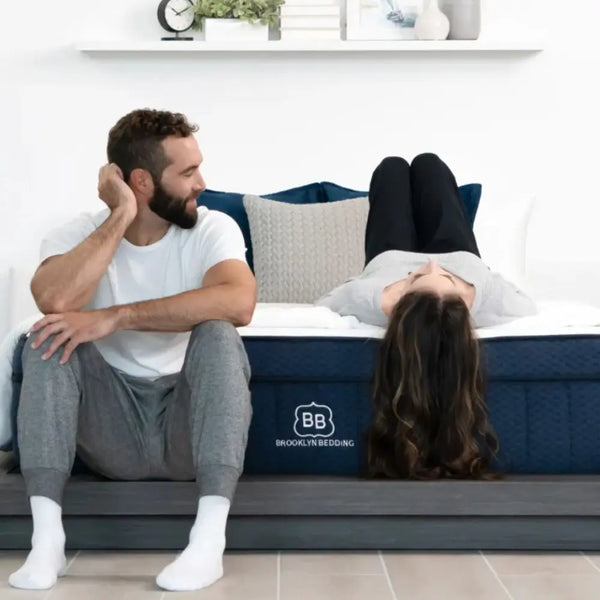
As parents, we all want our children to get the best possible sleep. A good night's sleep is crucial for their growth, development, and overall well-being. One of the most critical components of promoting healthy sleep habits is selecting the right mattress. In this guide, we will explore the sleep needs of children, the factors to consider when choosing a mattress, and how to ensure your little ones enjoy sweet dreams every night.
Understanding Children's Sleep Needs
Engaging your understanding of children's sleep requirements is essential. Just like adults, children need a sufficient amount of sleep to function effectively. However, the amount varies depending on their age. Here’s a breakdown of recommended sleep durations:
Sleep Needs by Age Group
- Infants (0-12 months): 14-17 hours of sleep per day
- Toddlers (1-3 years): 12-14 hours
- Preschoolers (3-5 years): 11-13 hours
- School-aged children (6-13 years): 9-11 hours
- Teenagers (14-17 years): 8-10 hours
As you can see, the sleep needs change significantly as children grow. Ensuring that children receive the right amount of sleep aids their physical, emotional, and cognitive development.
The Role of a Quality Mattress
The mattress plays a vital role in achieving restful sleep. A high-quality mattress can provide the necessary support for a child’s developing body, while also ensuring comfort throughout the night. Here are some key factors to consider when selecting a mattress for your child:
Support and Alignment
Proper spinal alignment is crucial for children. A quality mattress should provide adequate support to promote healthy posture while sleeping. Look for a mattress that offers a balance of cushioning and firmness; it should adapt to your child's body shape without letting them sink too deep.
Material Types
The type of material used in mattresses can significantly influence sleep quality. Here are the most common materials and their benefits:
- Innerspring Mattresses: These have coils that provide support and breathability. They are often more affordable but may not offer consistent pressure relief.
- Memory Foam Mattresses: Known for their excellent contouring abilities, memory foam can be a great choice as it can relieve pressure points and provide comfort. Look for breathable memory foam options if you live in a warmer climate.
- Latex Mattresses: Organic latex is hypoallergenic and resistant to mold and dust mites. It offers great support and durability.
- Hybrid Mattresses: Combining innerspring coils and foam layers, hybrid mattresses can provide the best of both worlds—support and comfort.
Safety Considerations
Safety is a paramount concern when selecting a mattress for children. Here are some aspects to ensure your child's mattress is safe:
Hypoallergenic Materials
Children can be sensitive to allergens, making it essential to choose a hypoallergenic mattress. Look for materials that resist dust mites, mold, and allergens to create a healthy sleeping environment.
Certification and Standards
Check for certifications like CertiPUR-US or GREENGUARD Gold, as these indicate that the mattress is free from harmful chemicals and has been tested for safety.
Choosing the Right Size
Choosing the correct mattress size is equally important. Here’s a guide on common mattress sizes for children:
- Crib Size: For infants and toddlers, crib mattresses are essential. They are typically 27.5 inches by 52 inches.
- Twin Size: A twin mattress (38 inches by 75 inches) is great for toddlers and young children transitioning from a crib.
- Twin XL Size: This slightly longer option (38 inches by 80 inches) is perfect for growing teenagers.
- Full Size: A full mattress (54 inches by 75 inches) can offer additional space and comfort, especially for older children.
Involve Your Child in the Decision
Involving your child in the mattress selection process can turn it into an exciting adventure. Let them test out different mattresses and find what they find most comfortable. This not only makes them feel more involved but will also encourage them to take pride in their sleeping space.
Creating the Ideal Sleep Environment
Along with a quality mattress, an ideal sleep environment contributes to better sleep quality. Here are some tips to enhance their sleep space:
Maintain a Consistent Sleep Routine
Establishing a nighttime routine can signal your child that it's time to wind down. Encourage calm activities before bed, such as reading or soothing baths to promote relaxation.
Darken the Room
Using blackout curtains can help create a sleep-conducive environment by preventing unwanted light. This is particularly beneficial if your child is sensitive to light while sleeping.
Control Noise Levels
Consider using a white noise machine or soft music to mask any disruptive sounds. This can help your child fall asleep easier and stay asleep longer.
The Right Bedding
The right bedding is just as important as the mattress itself. Choose soft, breathable materials like cotton or bamboo to enhance comfort and regulate temperature.
How to Care for the Mattress
Maintaining a mattress is crucial for hygiene and ensuring it lasts longer. Here are some tips on caring for your child's mattress:
Regular Cleaning
Vacuum the mattress regularly to remove dust and allergens. Spot clean as needed and follow any specific cleaning instructions provided by the manufacturer.
Use a Mattress Protector
A waterproof and hypoallergenic mattress protector can protect against spills, stains, and allergens, extending the mattress's life. This is particularly important for younger children.
Rotate or Flip the Mattress
To prevent uneven wear, it's advisable to rotate or flip the mattress regularly, depending on the type of mattress. This can also enhance its lifespan.
Final Thoughts for Sweet Sleep
Choosing the right mattress for your child is a significant decision that can have a lasting impact on their sleep and overall health. By understanding your child's specific sleep needs and factoring in comfort, material, safety, and size, you'll be well on your way to creating a peaceful sleeping environment. Remember to involve your little ones in the process, ensuring they feel excited about their new mattress. With the right choices, you can help your child enjoy sweet dreams for many nights to come!









